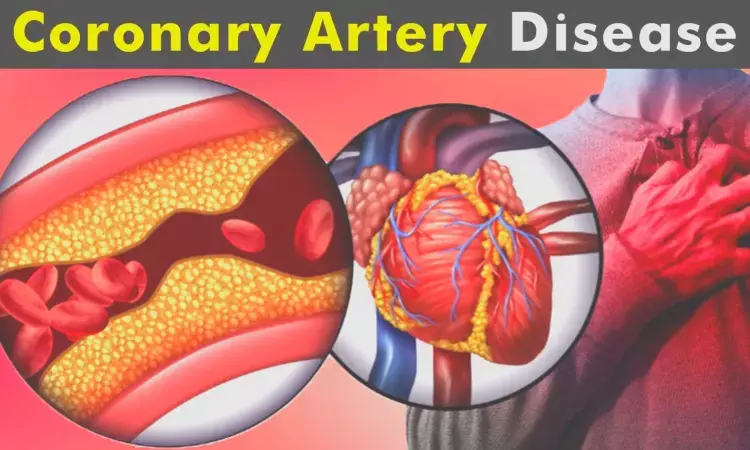- Home
- Medical news & Guidelines
- Anesthesiology
- Cardiology and CTVS
- Critical Care
- Dentistry
- Dermatology
- Diabetes and Endocrinology
- ENT
- Gastroenterology
- Medicine
- Nephrology
- Neurology
- Obstretics-Gynaecology
- Oncology
- Ophthalmology
- Orthopaedics
- Pediatrics-Neonatology
- Psychiatry
- Pulmonology
- Radiology
- Surgery
- Urology
- Laboratory Medicine
- Diet
- Nursing
- Paramedical
- Physiotherapy
- Health news
- Fact Check
- Bone Health Fact Check
- Brain Health Fact Check
- Cancer Related Fact Check
- Child Care Fact Check
- Dental and oral health fact check
- Diabetes and metabolic health fact check
- Diet and Nutrition Fact Check
- Eye and ENT Care Fact Check
- Fitness fact check
- Gut health fact check
- Heart health fact check
- Kidney health fact check
- Medical education fact check
- Men's health fact check
- Respiratory fact check
- Skin and hair care fact check
- Vaccine and Immunization fact check
- Women's health fact check
- AYUSH
- State News
- Andaman and Nicobar Islands
- Andhra Pradesh
- Arunachal Pradesh
- Assam
- Bihar
- Chandigarh
- Chattisgarh
- Dadra and Nagar Haveli
- Daman and Diu
- Delhi
- Goa
- Gujarat
- Haryana
- Himachal Pradesh
- Jammu & Kashmir
- Jharkhand
- Karnataka
- Kerala
- Ladakh
- Lakshadweep
- Madhya Pradesh
- Maharashtra
- Manipur
- Meghalaya
- Mizoram
- Nagaland
- Odisha
- Puducherry
- Punjab
- Rajasthan
- Sikkim
- Tamil Nadu
- Telangana
- Tripura
- Uttar Pradesh
- Uttrakhand
- West Bengal
- Medical Education
- Industry
Cutting Balloon Angioplasty Before Stenting Found Comparable to Intravascular Lithotripsy in Calcified Coronary Artery Disease: TCT 2025

Results from the first randomized controlled trial to directly compare the safety and efficacy of cutting balloon (CB) angioplasty to intravascular lithotripsy (IVL) prior to drug-eluting stent (DES) implantation for the treatment of calcified coronary artery disease found CB to be noninferior to IVL.
Findings were reported today at TCT® 2025, the annual scientific symposium of the Cardiovascular Research Foundation® (CRF®). TCT is the world’s premier educational meeting specializing in interventional cardiovascular medicine.
Coronary calcium is present in up to 30% of patients undergoing percutaneous coronary intervention (PCI) and is a key contributor to procedural complexity and suboptimal short and long-term clinical outcomes. While several balloon-based devices are available for calcium modification, direct comparisons remain limited. These devices vary significantly in mechanism of action and cost, underscoring the need for head-to-head evaluation.
A total of 413 patients with stable or unstable coronary artery disease with de novo calcified coronary lesions were randomized at 21 sites in the United States. Baseline, lesion and procedural characteristics were similar among both groups. The study was stratified to include two separate cohorts of patients were included: those with planned up-front rotational atherectomy (n=208) and those in whom up-front rotational atherectomy was not planned (n=205). In each cohort, patients were randomized to receive IVL- or CB-facilitated lesion preparation.
The primary endpoint was post-procedural stent area at the site of maximal calcification as measured by core lab-adjudicated, high-definition intravascular ultrasound assessment. The study found that for the post-procedural MSA, the mean (SD) was 8.6 mm2 ± 2.5 for IVL and 8.0 mm2 ± 2.4 for CB (Difference 0.6, 97.5% CI ∞, 1.1mm2, pnoninferiority = 0.007)]. There were no differences in stent expansion or calcium fractures between the two treatment arms in the total study population as well as in both individual cohorts, although interaction testing demonstrated that this effect may have varied based upon whether atherectomy was planned.
Average stent expansion at the site of maximum calcification was similar with 97.7 ± 24.0 for IVL and 97.7 ± 25.9 for CB (p=0.99). The procedural cost difference was $3,632 (95% CI: $2833 to $4418, p < 0.001) with the main cost difference being driven by the cost of the randomized device. Strategy success, defined as stent delivery with a residual stenosis less than 20% in the absence of significant angiographic complication and not having to use alternative calcium modification devices, was also similar with 89.7% for IVL compared with 89.2% for CB (p=0.88). Thirty-day MACCE outcomes were the same between groups at 2.9%.
“As part of an imaging-based approach to PCI of significantly calcified coronary lesions, cutting balloon angioplasty is a reasonable strategy when compared with intravascular lithotripsy,” said Suzanne J. Baron, MD, MSc, Director of Interventional Cardiology Research at Massachusetts General Hospital in Boston. “Not only is utilizing a cutting balloon safe and effective, it is also significantly less costly.”
Reference:
Cutting balloon treatment prior to stent placement comparable to intravascular lithotripsy for patients with calcified coronary artery disease, Cardiovascular Research Foundation, Meeting: TCT 2025: Transcatheter Cardiovascular Therapeutics
Dr Kamal Kant Kohli-MBBS, DTCD- a chest specialist with more than 30 years of practice and a flair for writing clinical articles, Dr Kamal Kant Kohli joined Medical Dialogues as a Chief Editor of Medical News. Besides writing articles, as an editor, he proofreads and verifies all the medical content published on Medical Dialogues including those coming from journals, studies,medical conferences,guidelines etc. Email: drkohli@medicaldialogues.in. Contact no. 011-43720751


